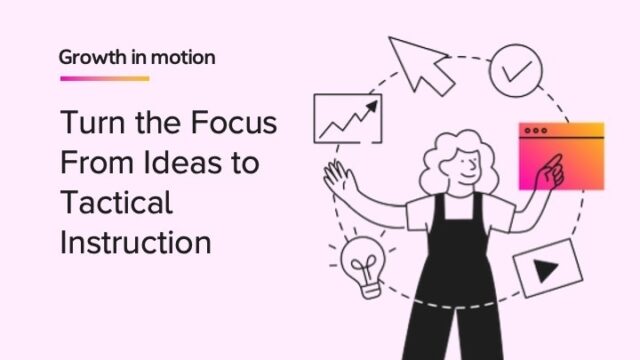
Schools are always looking for new and innovative ways to improve student behavior. One successful Positive Behaviorial Interventions and Supports (PBIS) strategy is using a behavior choice contract for a Tier 2 intervention, which is designed to help students who haven’t responded to a Tier 1 intervention. This strategy allows school administrators to individualize interventions for students based on their specific needs.
Read on for 10 benefits of using behavior choice contracts. We also provide a template for creating a behavior choice contract. Whether you’re a brand new administrator or you’re simply looking for new ideas to improve student behavior, we can help!
What are behavior choice contracts?
Simply put, behavior choice contracts are written agreements that specify the expectations for behavior in the classroom. Educators and students work collaboratively to create this type of contract and they agree to its terms along with caregivers.
Contracts may be used in conjunction with other PBIS strategies, such as schoolwide rules, group contingency plans, a PBIS behavior chart, or individual behavior plans. Individual behavior contracts usually address one issue at a time and are based on student and educator goals. Examples of behavior that a contract might target include the student raising their hand to speak, staying seated during work time, or completing homework assignments on time. Developing and implementing a contract can offer valuable feedback to the student, teacher, and caregiver.
Student behavior contract benefits
Here are 10 benefits of a behavior contract in PBIS tiered interventions.
1. A behavior contract ensures clear student expectations.
A behavior contract spells out the specific behaviors expected of a student and the consequences for not meeting those expectations. These contracts also offer the opportunity for students to voice their opinion and suggest possible behaviors to work on.
A behavior contract can be created with or without the help of a school psychologist or counselor. The contract should be signed by the student, a caregiver, and any other adult who may be involved in helping to support the child’s success at school. The contract should be reviewed regularly and updated as necessary.
2. A behavior contract reinforces positive behavior.
A behavioral contract holds students accountable for their actions and outlines specific reinforcements for positive behavior.
Keep these pointers in mind when creating a contract that focuses on positive behavior. First, make sure that the behavioral expectations are realistic and achievable. If the goals are unrealistic, it could be more difficult for the student to meet them, leading to frustration.
Remember that a behavior contract should always include positive consequences for appropriate behavior. Be clear and thoughtful about the positive schoolwide or classroom behaviors you would like your contract to reinforce. Examples include taking space to regroup when needed, following directions, and adhering to routines.
3. A behavior contract provides structure and support.
Behavior contracts provide structure and support by setting out specific goals and rewards for meeting them. They also provide a framework for caregivers to enforce those rewards, which can help motivate the students to stick to the agreement. Behavior contracts also create a sense of accountability for anyone who has signed it.
Another way that behavior contracts offer support is by providing a framework for how to proceed if there are problems with the agreement. This can help prevent disagreements from escalating and provide a way to resolve them effectively.
4. Behavior contracts allow teachers to track student behavior and reinforce positive choices.
There are a few different ways that behavior contracts can track student behavior. The most common method is through a logging system, where the contract stipulates that the student must log their behaviors in a specified way. For example, this could be tracking how often they exhibit certain behaviors or logging what times they engage in certain activities.
Another way behavior contracts can track student behavior is through more informal means, such as check-ins with the teacher or caregiver overseeing the agreement.
5. Behavior choice contracts create a sense of community and responsibility.
When you have a contract with someone, it creates a sense of responsibility and ownership. If you don’t follow through on your contractual obligations, there are consequences.
This is why behavioral contracts are often successful in schools, where it’s essential to create a sense of ownership and responsibility among students. By signing a contract, individuals agree to abide by certain rules and guidelines. This can promote positive behavior and discourage disruptive behavior.
Plus, The National Center on Scaling Up Effective Schools (NCSU) found that student ownership and responsibility are two key factors that determine the quality of academic performance. In a nutshell, behavior choice contracts can have a significant positive impact on school culture.
6. Behavior contracts involve caregivers.
There are a few different ways that behavior contracts involve caregivers. One way is by setting expectations for their child’s behavior. This helps caregivers understand what their child is expected to do and how they can support them in meeting those expectations.
Another way is by providing resources and information about positive behavior management strategies. This can help caregivers learn about different ways to encourage positive behavior in their child. Behavior contracts can also provide a platform for communication between caregivers and educators. This can help ensure that everyone is on the same page when supporting the child’s positive behavior.
This connection between school and home is essential and can even create an optimal learning environment both within and outside of school.
7. Behavior choice contracts are easy to implement.
Fortunately, creating a behavior choice contract doesn’t have to take much time. You can use classroom rules as a basis for your contract and add individualized behavioral goals.
Additionally, behavior choice contracts are straightforward for the student. Simply brainstorm behaviors, create a contract using a template, go over it with them, sign it, and go from there. This positive reinforcement strategy also alleviates pressure for educators because the goals are provided clearly for the student, and it’s the student’s responsibility to follow them.
8. Behavior choice contracts are effective for students with learning differences.
Behavior contracts help improve the learning environment for students with learning differences by providing a structured way for both the student and teacher to communicate behavioral expectations. This transparent communication helps to reduce misunderstandings and provides a roadmap for improvement.
In addition, behavior contracts can improve student behavior by providing specific rewards for meeting or not meeting agreed-upon goals. This type of tangible reinforcement can benefit students who may struggle with intrinsic motivation. Ultimately, this type of structure can help all students, including those with learning differences, to thrive in the classroom.
9. Behavior contracts offer educators, students, and caregivers valuable feedback.
Another benefit of behavior choice contracts is that they offer valuable feedback for educators, students, and caregivers. A written document outlining expected student behaviors and goals is a tangible way to evaluate classroom behavior.
The contract also can be used as a reminder during parent-teacher conferences, while reviewing report cards, or during times when a student struggles.
10. Behavior choice contracts can be used for all students and grades.
Behavior contracts can be used for all students and grade levels by providing expectations for student behavior, outlining consequences for breaking the rules, and setting up a system of rewards for good behavior. This type of contract can be effective in school and out of school. In other words, behavior contracts can be adapted to any situation and age group.
The bottom line
Behavior choice contracts are an excellent way to take the guesswork out of classroom management. They provide a visual representation of expected behaviors and specific rewards and consequences for meeting or not meeting those expectations. With the right tools in place, you can create a positive learning environment where students feel safe and supported.
This article was adapted from a blog post initially developed by the education technology company Classcraft, which was acquired by HMH in 2023. The views expressed in this article are those of the author and do not necessarily represent those of HMH.
***
Find more lesson plans and classroom resources on Shaped.
Be the first to read the latest from Shaped.














